Listeners:
Top listeners:
-
 play_arrow
play_arrow
RADIO DROMAGE
 Bloc Party - Helicopter
Nothing much really
Lucy Harty
Bloc Party - Helicopter
Nothing much really
Lucy Harty
 Chase Rice - Ready Set Roll
Are we on air???
Roy Yellow
Chase Rice - Ready Set Roll
Are we on air???
Roy Yellow
 Annoying Orange - Party Rock
You know I come to party hard!!
Annoying Orange - Party Rock
You know I come to party hard!!
Paintings on street walls: A way Haitian graffiti artists choose to denounce violence, bring life and beauty back to Port-au-Prince


PORT-AU-PRINCE — In the capital of Haiti, Port-au-Prince, various methods are being used to denounce, condemn and urge the Haitian government to take measures against the gang-fueled insecurity that is terrorizing people, but most importantly to inspire hope.
One of those methods includes the work of graffiti artists who use the city’s various walls to draw murals, images and fragments of text encouraging Haitians to say no to insecurity and gang violence. For these artists, their graffiti highlights the urgent need to steer the country away from its troubled path toward a better life. This is also a way to bring back the vibrant life and beauty that Port-au-Prince once had.
“I have already worked on several graffiti pieces asking for peace,” graffiti artist Renel “2son” Alexandre told The Haitian Times. “I created a piece to call for a change of direction; it depicted a gun with a bent barrel, symbolizing the idea that someone on a negative path should understand the message of change.”
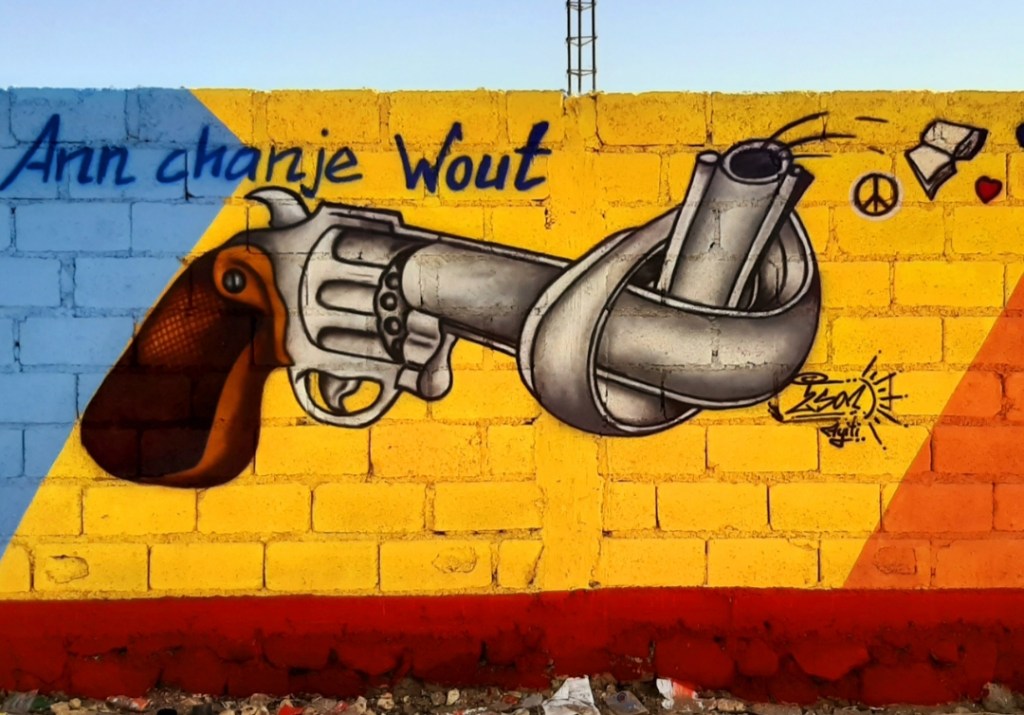
Alexandre, the author of several murals in Port-au-Prince, is very frustrated by the insecurity that has already caused numerous deaths and forced many of his Haitian compatriots to flee the country or be displaced throughout the country. Originally from Cité Soleil, one of Port-au-Prince’s largest slums, the artist known as 2son is well aware of the climate of violence and the struggle between armed groups. Faced with the deteriorating situation in the country, the graffiti artist believes that it is essential for Haitians to reconcile and stop living like sworn enemies.
“Even we, the artists, have reached a point where the only way to express our frustration is through our works with our sprays,” Alexandre said. “Today, the majority of graffiti artists’ works focus on the reality of the country, reconciliation, and other positive actions that can help the country.”
By using the walls of Port-au-Prince as their canvas, graffiti artists like Alexandre aim to send powerful messages to the public and the government, urging a change in direction for a better future in Haiti.
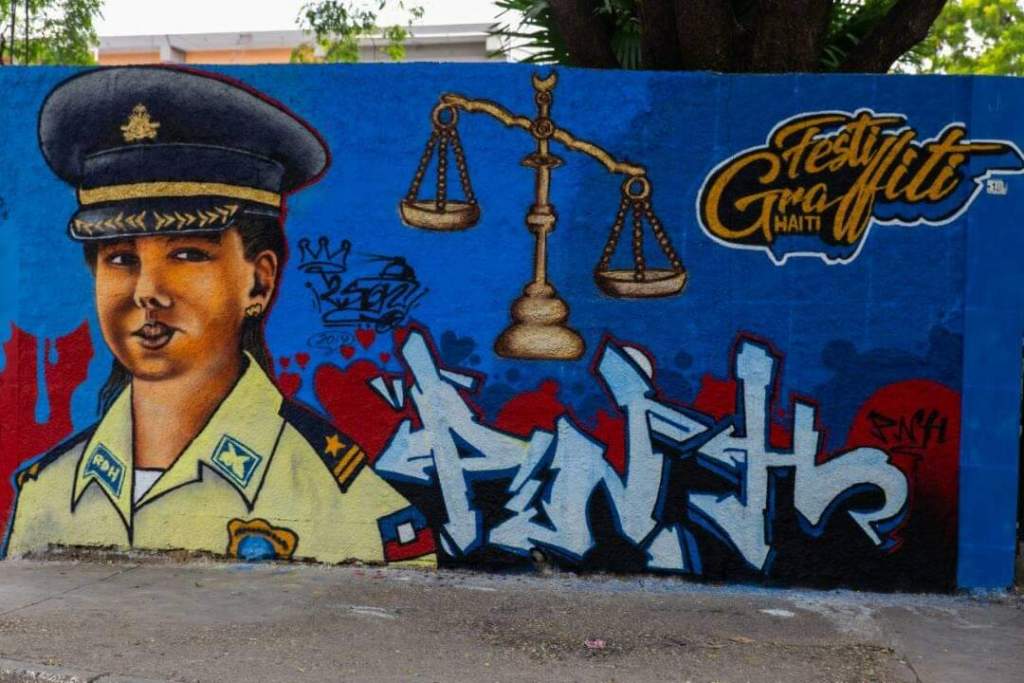
A murderous climate installed by gangs
For several years, Haiti has been living in a climate of insecurity, transforming a major portion of its population into nomads. Currently, nearly 600,000 people, half of them children, have been forced to flee their homes due to repeated gang attacks, according to the International Organition for Migration (OIM).
Since the assassination of President Jovenel Moïse in July 2021, the situation has deteriorated significantly. According to data from the United Nations Integrated Office in Haiti (BINUH), 3,884 murders and injuries linked to gang violence were reported in the first six months of 2024. This includes 2,505 incidents in the first quarter and 1,379 in the second quarter. The first quarter statistics represent an increase of more than 53% compared to the previous period in 2023, making it the most violent period in Haiti since the start of 2022, according to BINUH.
No sector or person is spared from this rise in insecurity. Overruled by gangs, Former Haitian Prime Minister Ariel Henry issued a call for help, which was answered by the UN Security Council in October 2023, when it approved the deployment of the Kenyan-led Multinational Security and Support (MSS) mission to Haiti.
“For me, you can’t be an artist and not take a position on what’s happening in your country. My position is that of all the young people of the ghetto who dream of a better tomorrow and wish for a strong, conscious leadership capable of taking action.”
Graffiti Artist Patrick “Tchooko” Edouarzin
Despite legal and financial obstacles causing significant delays, the first two contingents of the MSS arrived in Haiti between June 25 and July 16.
Simultaneously, the new transition government took different measures to combat escalating gang violence, including numerous changes and rotations of personnel within the Haitian police institution.
Among the changes and measures include the appointment of Rameau Normil as police chief and declaration of a state of security emergency. However, these actions failed to repel the gangs, who surged and expanded their control in July to other territories like Gressier and Ganthier, killing many people and burning police infrastructure as well as residents’ homes.
The ongoing violence and instability have left many Haitians in dire straits, with the people continuing to suffer from the impacts of gang control and the lack of effective governmental response.
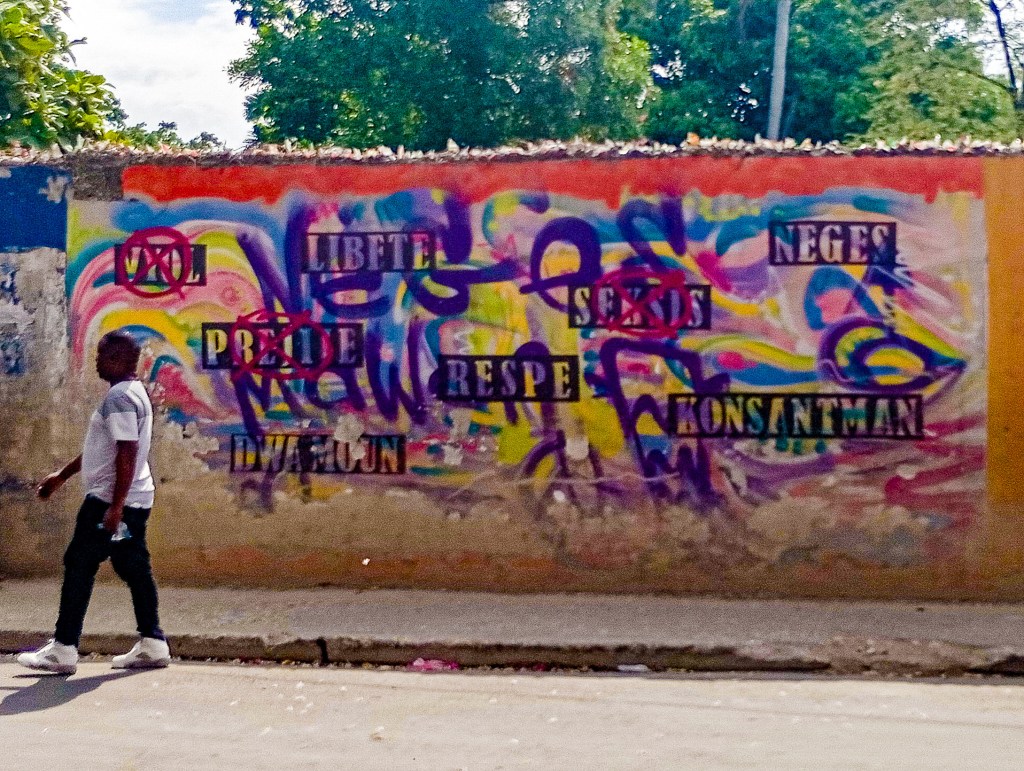
Graffiti artists want to give hope in Haiti’s chaotic context
Throughout the country, voices are being raised and actions are being taken in almost all sectors, particularly cultural and artistic, to denounce insecurity. Aware of the context of violence, street artists, armed with their sprays, brushes and pots of paint, represent the chaotic reality of the country while spreading messages of hope on the walls.
“With graffiti, our goal is to bring life, beautification, and color to certain areas,” graffiti artist Laurent “Pens” Philippe told The Haitian Times. “I remember a graffiti piece on Rue Roy; so far, residents tell us how this work has revitalized the area and reduced robbery attacks on passers-by.”
These artists use their creativity to highlight the need for change and to inspire the community to envision a better future. Their work not only beautifies the environment but also serves as a powerful tool for social commentary and advocacy against the prevailing insecurity.
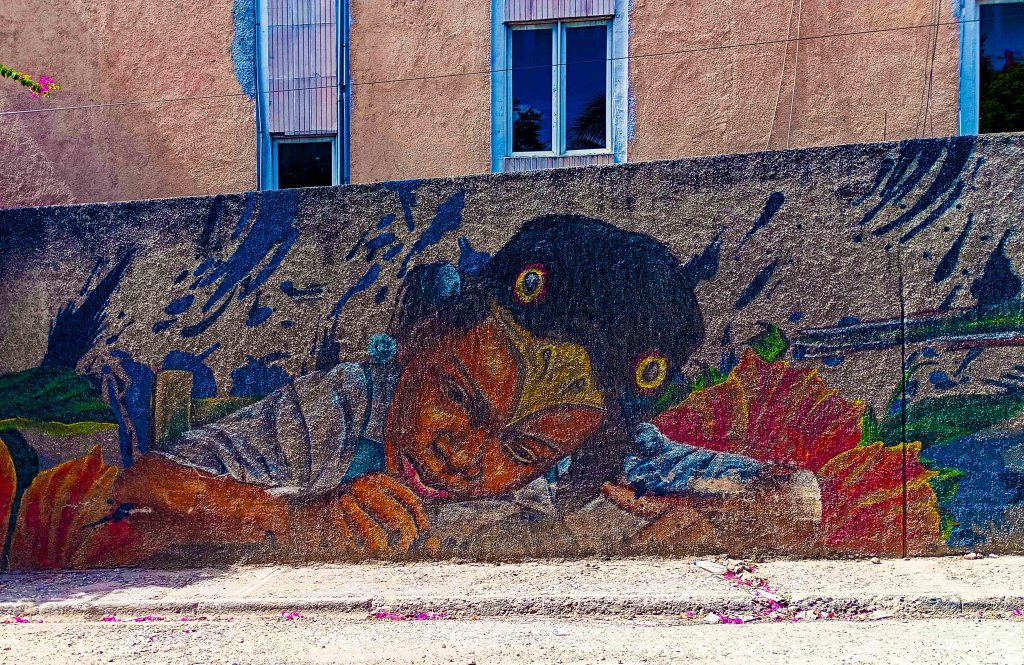
These artists raise awareness and draw society’s attention to abuses. They transform the walls of Port-au-Prince into mirrors reflecting the realities and actions of each person. Murals are present in various neighborhoods, including Bois-Verna, Rue Rivière, Avenue Lamartinière, Carrefour-Feuilles, Bourdon, and Pétion-Ville. The cheerfulness they bring and their social messages make these spaces more vibrant and alive.
Philippe, who started graffiti in 2010, considers the art to be a work of memory to honor the victims of insecurity. It is the artist’s way of expressing frustration with the country’s situation and the pain of Haitian families. Philippe recalls one of his works, created on Rue Rivière, in homage to the photojournalist Vladimir Legagneur. Legagneur was reported missing in Grand Ravine, an area controlled by gang leader Renel “Ti Lapli” Destina, while on his way for a photo report assignment.
“We created this Legagneur graffiti to address injustices,” he said. “We approached it from the angles of social, racial, and gender injustice,” Philippe added. “We understood that if the country continues to be in tatters, we must do something to remember the people, to remember how many good people who could contribute to the future of the country have been killed.”
According to Philippe, through their art, these graffiti artists aim to keep the memory of the victims alive and to inspire a collective effort for change. Their work not only beautifies the urban landscape but also serves as a poignant reminder of the ongoing struggles and the need for unity and action.
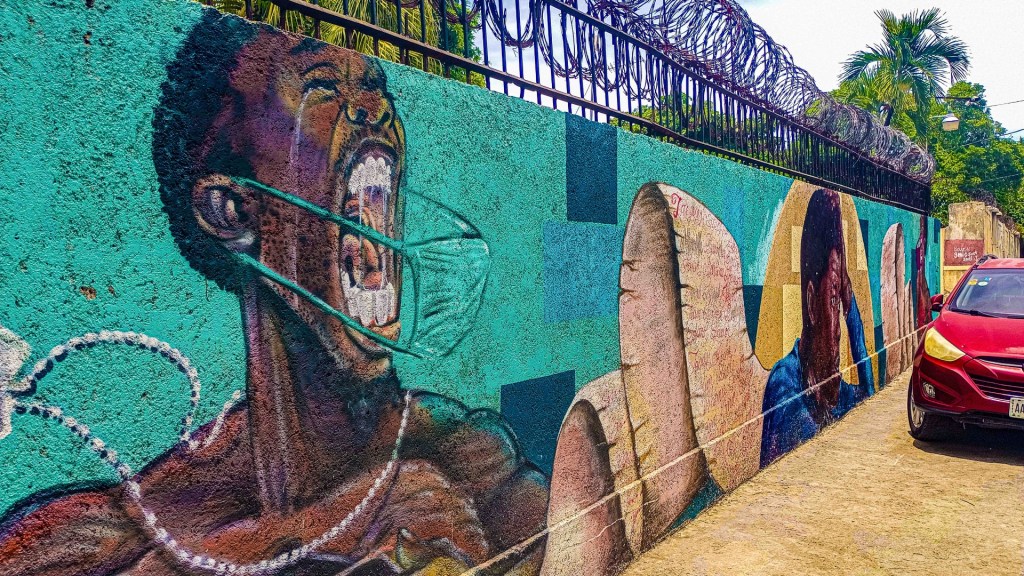
A citizen position against the situation in the country
Modern graffiti, as we know it today, remains a political art form associated with hip-hop culture. It emerged in the 1960s and 1970s in New York, often as a means of protest. Since its beginnings, this art form has been used to express opinions, criticize policies and advocate for social causes. Slogans and murals can reflect popular anger or call for change. This is the context in which Haitian graffiti artist Patrick Edouarzin, known as “Tchooko,” fits.
“For me, you can’t be an artist and not take a position on what’s happening in your country,” graffiti artist Edouarzin said. “My position is that of all the young people of the ghetto who dream of a better tomorrow and wish for a strong, conscious leadership capable of taking action.”
Tchooko’s career as a graffiti artist began in 2013, and this passion and profession have allowed him to increase his knowledge and meet some of his financial needs. However, today he is very skeptical about the future of graffiti in Haiti’s current times. According to Tchooko, graffiti as street art cannot survive if it is difficult to circulate on the streets of the country.
He believes that the country is plunged into chaos because politicians have refused to take responsibility. One of the artist’s works on the walls of Port-au-Prince demonstrates his position when he drew a cat, a pig and a dog who revolt because their names are attributed to Haitian politicians. It’s like an insult to their image.
Through his art, Tchooko continues to highlight the struggles and hopes of the Haitian people, using the walls of Port-au-Prince as canvas to express the need for change and accountability.
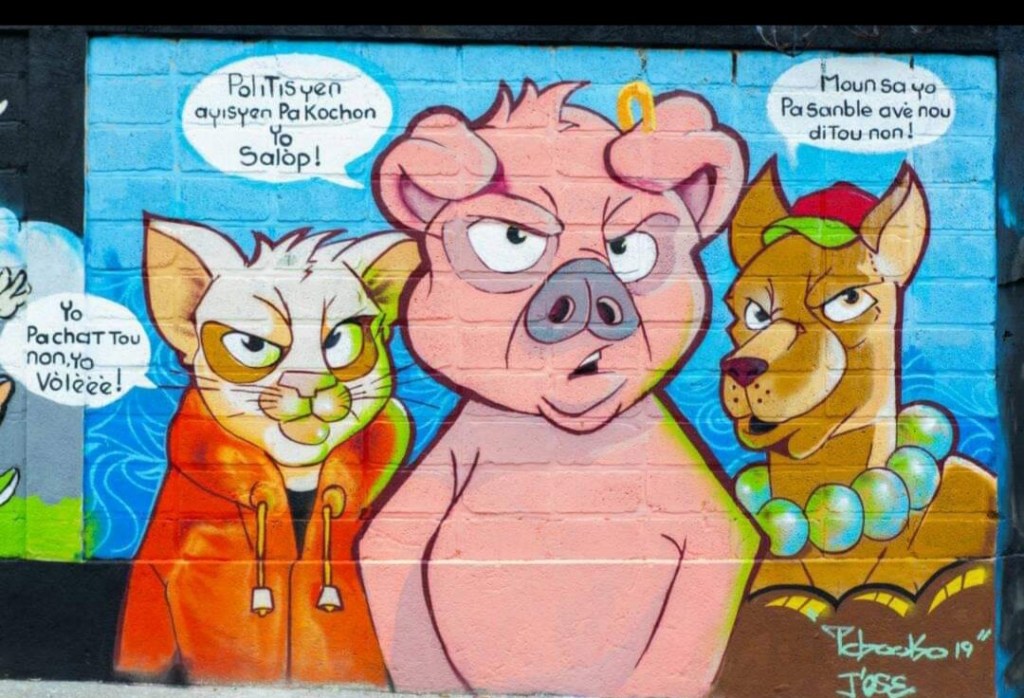
“This work at Baussan Street was a message to tell people in the state to stop blaming others but also invites the society to stop looking down on the actions of leaders,” said Tchooko. “You are a politician who robs the state, I do not call you intelligent but a thief.”
The post Paintings on street walls: A way Haitian graffiti artists choose to denounce violence, bring life and beauty back to Port-au-Prince appeared first on The Haitian Times.
Paintings on street walls: A way Haitian graffiti artists choose to denounce violence, bring life and beauty back to Port-au-Prince was first posted on August 2, 2024 at 9:53 am.
Écrit par: Viewcom04
Articles similaires
Articles récents
- MarcoTech CEO ordered to pay $765K in fraud case targeting Haitians
- Haitian and other Black churches in Brooklyn persist amid attendance decline, gentrification
- Outfits made from recycled waste in epic Cap-Haïtien ‘Trashion Show’ | PHOTOS
- Quatre ans après le séisme, le sud d’Haïti se relève difficilement
- Laurent Saint-Cyr et Alix Didier Fils-Aimé affichent l’unité de l’État face à l’insécurité
Commentaires récents
Aucun commentaire à afficher.-
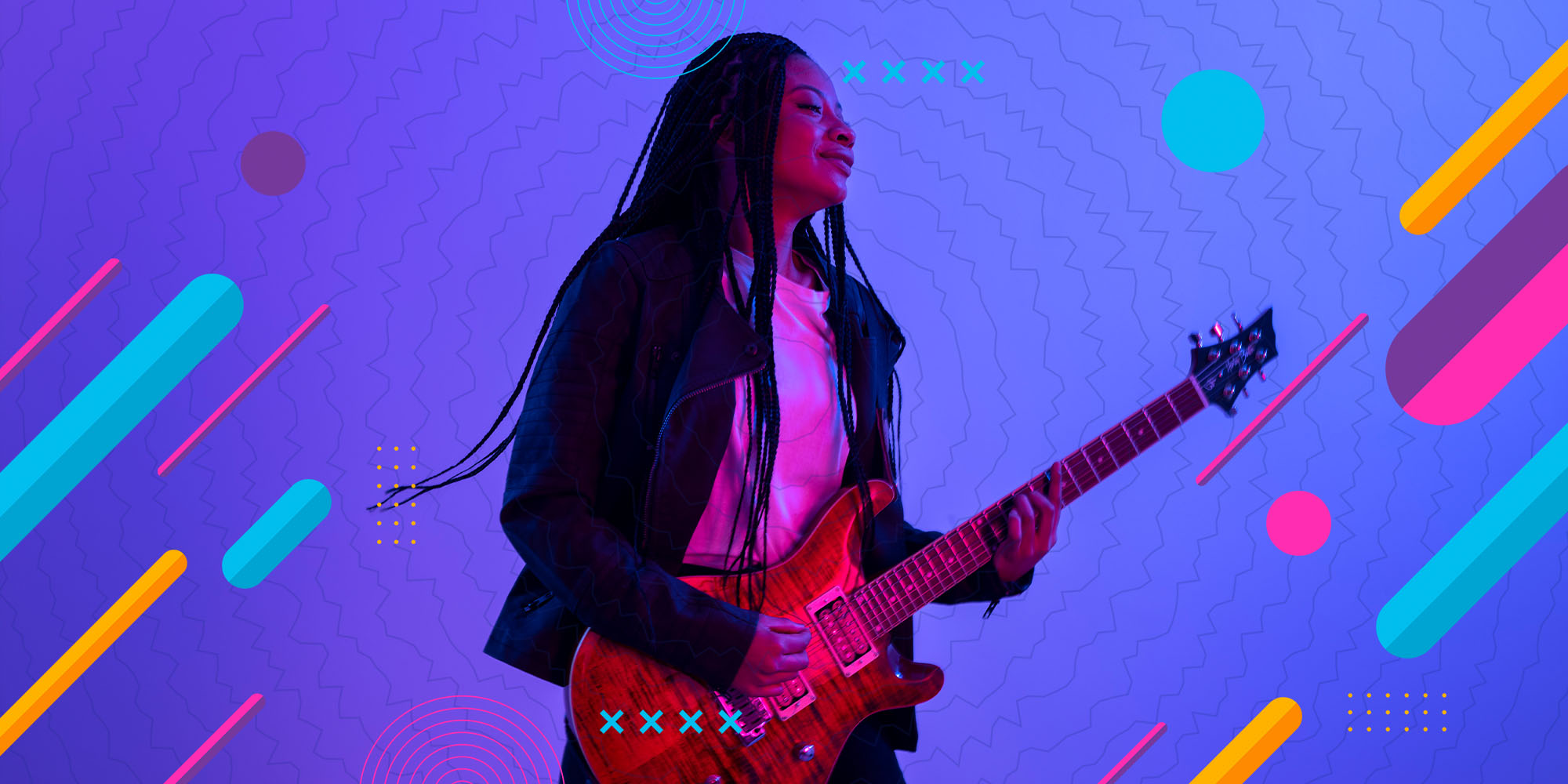
Hits Du Moment
Avec Marika Love
For every Show page the timetable is auomatically generated from the schedule, and you can set automatic carousels of Podcasts, Articles and Charts by simply choosing a category. Curabitur id lacus felis. Sed justo mauris, auctor eget tellus nec, pellentesque varius mauris. Sed eu congue nulla, et tincidunt justo. Aliquam semper faucibus odio id varius. Suspendisse varius laoreet sodales.
close Chart
-
1
play_arrowYo Dim Sa
K-Dans
-
2
play_arrowBiznis Pam
Djakout #1
-
3
play_arrowJere'm
Harmonik
-
Top popular

Le gouvernement haïtien définit ses priorités pour le prochain budget

Haiti’s Fort Jacques, once a great attraction to visitors, is now abandoned as gang-fueled insecurity keeps tourists away
Processus électoral : le COSHARCO et la CSH accusés de favoritisme

Hubdemy, une plateforme de cours en ligne lancée par des étudiants et professionnels haïtiens pour booster l’éducation
Flashback | Bombardopolis-Haïti, terre d’accueil pour Johannes Drumpft, l’arrière-grand-père de Donald Trump




